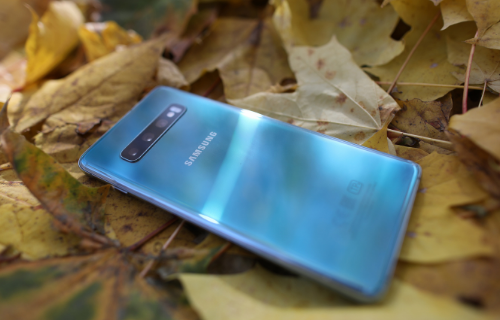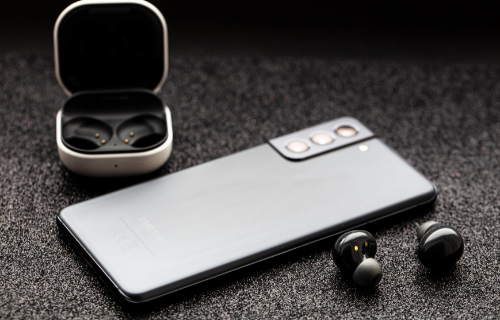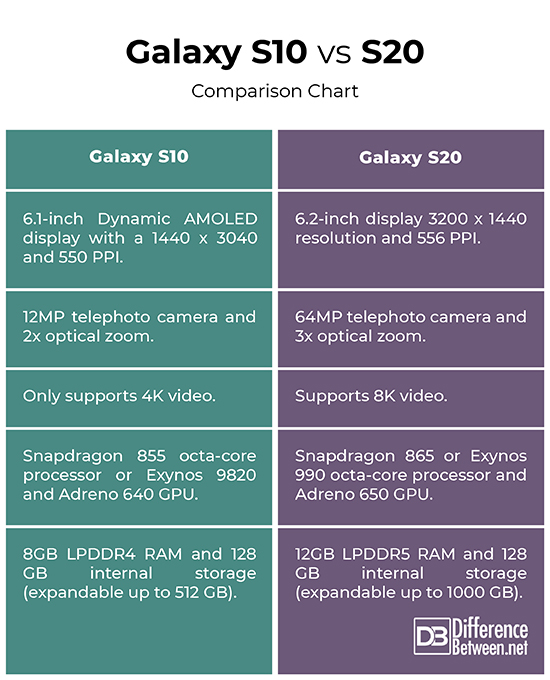Difference Between Galaxy S10 and S20
Galaxy S10 and Galaxy S20 are two of Samsung’s most popular flagships in a long line of Galaxy smartphones. If you’re considering buying a new Samsung smartphone, then these two are probably your top picks, although, Galaxy S10 was launched in 2019. Still, the S10 is one of Samsung’s most favored flagships till date. Even though Galaxy S21 series is in circulation, the company is running favorable deals and discounts on the older phones. So, now is probably the right time to book one of your favorite flagships instead of the new ones.

Galaxy S10
The Galaxy S10 is still one of Samsung’s flagship smartphones till date. Launched in 2019 alongside the Galaxy 10E and Galaxy S10+, the Galaxy S10 features a powerful Snapdragon 855 processor and a long lasting battery. The S10 series is a celebratory series of the 10th anniversary of the Galaxy S flagship line. In 2020, a midrange version, the Galaxy S10 Lite was also introduced. The S10 ships with Android 9.0 Pie. In Nov. 2019, the S10 received the Android 10 update, which includes the One UI version 2.0.

Galaxy S20
Launched in Feb. 2020, the Galaxy S20 is an excellent flagship phone without huge flaws. Compared to the Galaxy S10, the Galaxy S20 delivers a few upgrades, like the higher refresh rate, better battery life, 5G connectivity, and an improved telephoto camera. It looks similar to the Galaxy S10 or other Galaxy S phones for that matter, except the placement of the punch-hole camera and the rear camera alignment. The powerful Snapdragon 865 processor is a major upgrade, complimented by the upgraded 12GB RAM.
Difference between Galaxy S10 and S20
Display
– The first thing you notice in any smartphone is the display, which is still one of the most unique selling points for any electronic device. That being said, the Galaxy S10, at 6.1-inch, is not too big and not too small. It has a Dynamic AMOLED display with a 1440 x 3040 pixels screen resolution and 550 pixel density. The Galaxy S20’s 6.2-inch display is WQHD+ and has a 3200 x 1440 resolution and 556 PPI.
Refresh Rate
– One major difference between the two flagships is the refresh rate. The Galaxy S10 has a standard 60 Hz refresh rate, whereas the Galaxy S20 doubles that number to 120 Hz. This means that the screen updates twice as fast, motion is smoother whether you’re scrolling through some site, watching a movie. They don’t look significantly different, at least on the front, with curved displays and punch-hole camera (different placement).
Camera
– The Galaxy S10 has one of the best smartphone cameras back then, with a triple camera setup on the rear – a 12MP main camera, 12MP telephoto camera, and a 16MP ultra-wide camera. The Galaxy S20 has a similar triple camera setup, but its telephoto lens truly stands out with a 64MP sensor, supporting a 3x optical and 30x digital zoom for taking far-reaching shots, compared to S10’s 2x optical zoom. The Galaxy S20 can record 8K video, which is a major advantage over the S10’s 4K video.
Hardware
– Coming to hardware specs, the Galaxy S10 boasts a Snapdragon 855 octa-core processor (7 nm) or Exynos 9820 and Adreno 640 GPU. It has 8GB LPDDR4 RAM and 128 GB of internal storage, which is expandable up to 512 GB. The Galaxy S20 has the Snapdragon 865 or Exynos 990 octa-core processor and Adreno 650 GPU, with 12GB of LPDDR5 RAM and 128 GB of internal storage (expandable up to 1000 GB). Unlike the Galaxy S10, the Galaxy S20 is a 5G phone – in most regions.
Battery
– The Galaxy S10 packs a 3,400 mAh battery, which is a decent upgrade over the 3,000 mAh capacity of its predecessor Galaxy S9. They still claim to have a full-day battery life for the S10 as they did for their predecessor. The Galaxy S20, on the other hand, is a quality upgrade over the S10 with a 4,000 mAh battery, which is a huge leap. This gives the Galaxy S20 an additional boost before it needs to be plugged in for charging.
Galaxy S10 vs. S20: Comparison Chart

Summary
The Galaxy S20 does not seem to be a major upgrade over the S10, apart from the typical spec upgrades, like the newer processor, upgraded battery, and more RAM. However, there are some major upgrades as well, such as the 64MP telephoto sensor and a 120Hz refresh rate. Some people may find these reasons valid enough to upgrade to the S20. Others might also be skeptical about the higher cost against the minor upgrades. The 5G connectivity and a slightly larger display may not seem much but it’s also true that it’s the future of smartphones.
Is S10 better than S20?
Both are Samsung’s flagship phones, but the Galaxy S20 is relatively a newer model and successor of the Galaxy S10. The S20 has some significant upgrades over the S10.
Is Samsung S20 better than S10 Plus?
The Galaxy S20 has a 64MP telephoto camera, 120Hz refresh rate, faster storage type, and a better memory type (LPDDR5). So, the Galaxy S20 is surely a worthy upgrade over the S10 Plus.
Is S20 worth upgrade from S10?
If you’re willing to spend some extra bucks for a better telephoto camera, higher refresh rate, and 5G connectivity, then it’s worth upgrading to Galaxy S20. Else, you can go for S10, which is still one of Samsung’s best flagships till date.
Why does Samsung jump from S10 to S20?
Samsung wanted a name that would refresh their branding and there’s this obvious reason: it’s a new decade; it’s the 2020s. The S20 marks the company as a pioneer of a mobile ecosystem powered by 5G, AI, and IOT.
- Difference Between Caucus and Primary - June 18, 2024
- Difference Between PPO and POS - May 30, 2024
- Difference Between RFID and NFC - May 28, 2024
Search DifferenceBetween.net :
Leave a Response
References :
[0]“Samsung Galaxy S20. Jan. 2022, https://www.samsung.com/us/mobile/galaxy-s20-5g/s20-fe-5g/. Accessed 10 Feb. 2022.
